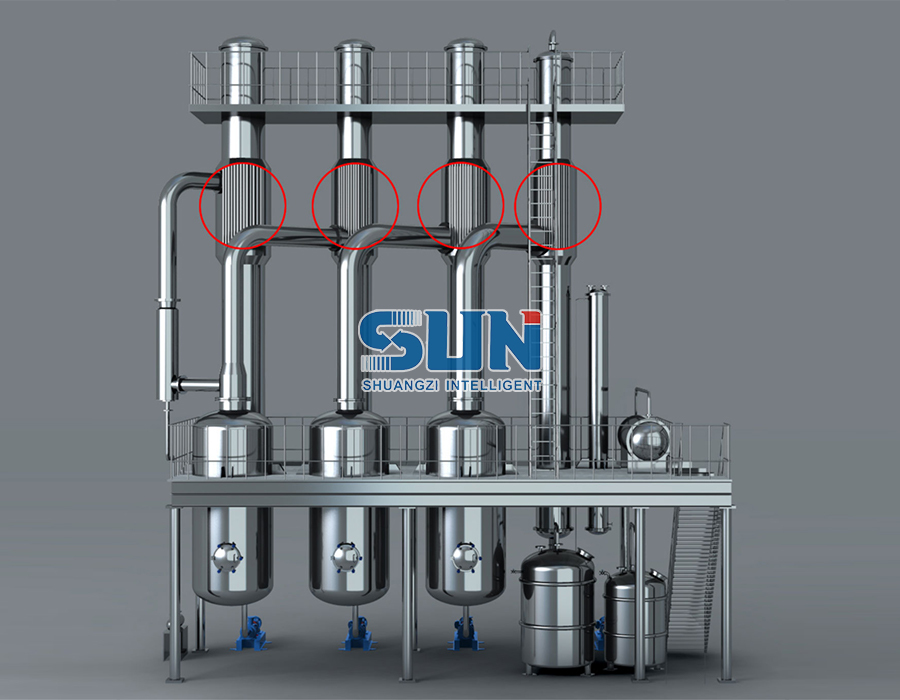To ensure optimal performance of fall film evaporator, it is important to follow regular maintenance and cleaning procedures. Here are some typical recommendations:
Regular Inspections: Conduct routine inspections of the fall film evaporator to identify any signs of wear, damage, or buildup. Check for leaks, loose connections, or corrosion.
Cleaning the Heat Transfer Surface: The heat transfer surface of the fall film evaporator should be cleaned periodically to remove fouling or scaling. This can be done by chemical cleaning or mechanical means, depending on the nature of the deposits. Follow the manufacturer's recommendations for suitable cleaning agents and methods.


Removing Deposits: If there is scale, deposits, or other fouling on the internal surfaces, it is essential to remove them. Deposits can hinder heat transfer and reduce efficiency. Consult the equipment manual for guidance on specific cleaning procedures and chemicals that are compatible with the materials of construction.
Tube Inspection and Cleaning: Fall film evaporators often consist of multiple tubes or channels. Inspect the tubes for any blockages, fouling, or damage. Clean the tubes using appropriate techniques such as brushing, chemical cleaning, or high-pressure water jets to remove any accumulated deposits.
Check and Clean Condensate Drains: Ensure that the condensate drains are clear and functioning properly. Clean or replace any clogged or damaged drain lines, traps, or valves to prevent backup or flooding.
Lubrication and Bearing Maintenance: If the fall film evaporator has rotating parts or bearings, follow the manufacturer's recommendations for lubrication and maintenance. Regularly inspect and lubricate bearings, replace worn-out parts, and address any abnormal noise or vibration.
Monitor Operational Parameters: Continuously monitor and record key operational parameters such as temperature, pressure, flow rates, and performance indicators. Deviations from normal values may indicate issues that require attention or maintenance.
Regular Equipment Testing: Conduct regular performance tests to evaluate the efficiency and capacity of the fall film evaporator. This can help identify any degradation or loss of performance, enabling timely maintenance or adjustments.
Maintain Proper Water Treatment: If the fall film evaporator uses water as a heating or cooling medium, ensure that the water quality is appropriate. Implement a suitable water treatment program to prevent scaling, corrosion, or biological growth that can adversely affect the equipment.
Follow Manufacturer's Guidelines: Always refer to the manufacturer's guidelines, maintenance manuals, and recommendations specific to your fall film evaporator model. They will provide detailed instructions and best practices for maintenance, cleaning, and troubleshooting.
Remember, the maintenance and cleaning procedures may vary depending on the specific design, operating conditions, and materials used in your fall film evaporator. It is crucial to consult the equipment manufacturer or a qualified technician for precise instructions tailored to your equipment.


 英语
英语 俄语
俄语










